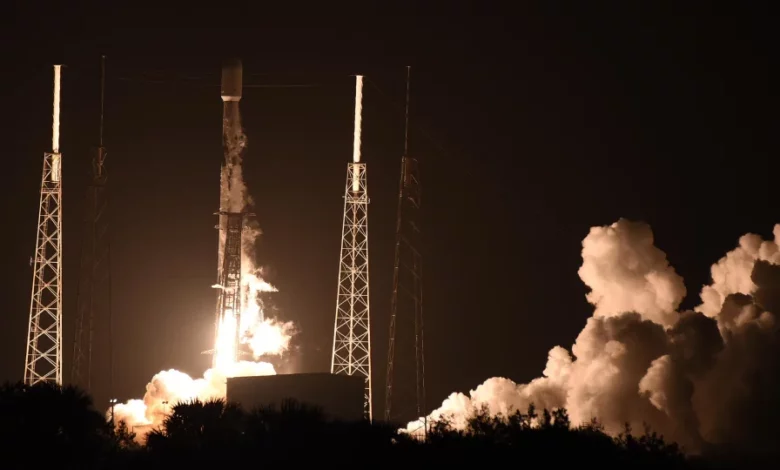
A Japanese lunar lander, carrying a rover developed in the United Arab Emirates, will attempt to find its footing on the moon’s surface Tuesday — potentially marking the world’s first lunar landing for a commercially developed spacecraft.
The lander launched atop a SpaceX rocket from Cape Canaveral, Florida on December 11. Since then, it’s taken a three-month trek to enter orbit around the moon, which lies about 239,000 miles (383,000 kilometers) from Earth, using a low-energy trajectory.
The lunar lander, called Hakuto-R, is carrying the Rashid rover, which was built by Dubai’s Mohammed bin Rashid Space Centre (MBRSC), in the United Arab Emirates (UAE) — the first Arab-built lunar spacecraft.
In history, only three countries have ever executed a controlled landing on the moon — the United States, the former Soviet Union and China. The US remains the only country to have put humans on the moon.
Japanese company ispace, which built the Hakuto-R lander, has a different approach to prior lunar missions, aiming to land its spacecraft on the moon as a for-profit business rather than under the banner of a single country.
The company has shared mission updates on its Twitter account, including a recent photograph of the Earth peeking out from behind the moon that was captured by the spacecraft as it traveled through lunar orbit.
“Our earliest targeted landing date,” the company posted on Monday, is “Tuesday, April 25, 16:40 (UTC)/12:40 (EST)”.
ispace has been bracing for mishaps. “Recognizing the possibility of an anomaly during the mission, the results will be weighed and evaluated against the criteria and incorporated into future missions already in development between now and 2025,” the company wrote in a December 11 post.
If successful, the 22 pound (10 kg) Rashid rover will emerge from the lunar lander and spend “most of the 14-day lunar daytime exploring the Atlas Crater on the northeast of the Moon,” according to the European Space Agency, which helped design the rover’s wheels.
The “Rashid rover is equipped with one high resolution camera on its front mast and another mounted on its rear, as well as a microscopic camera and thermal imaging camera,” ESA said. “It also carries a ‘Langmuir probe’ to sample the plasma environment prevailing just above the lunar surface.”
The context
Japan’s ispace is one of several companies that competed in the Google Lunar XPrize, which offered a $20 million reward to the company that could put a robotic rover on the moon, travel a couple of thousand feet, and transmit data back to Earth.
The Google-sponsored competition was scrapped in 2018 — but ispace was among the companies that chose to continue pursuing the mission.
Israel-based company SpaceIL was the first XPrize contestant to attempt to put its lander on the moon after the program ended. Its Beresheet spacecraft crashed after ground teams lost contact with the lander as it approached the surface.
ispace’s future plans include a mission to retrieve lunar soil samples on behalf of NASA – its Artemis program involves the use of commercial lunar landers to explore the lunar surface.
The company is relying on the ESA to provide key communications with its robotic lunar lander, the agency noted in a press release.




